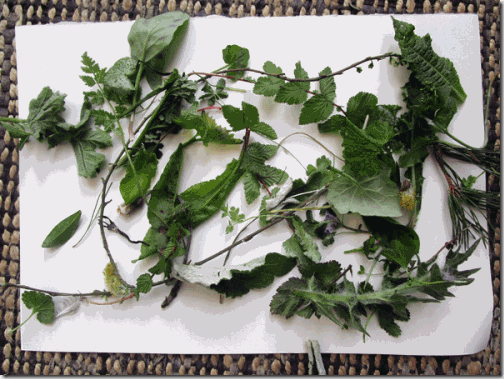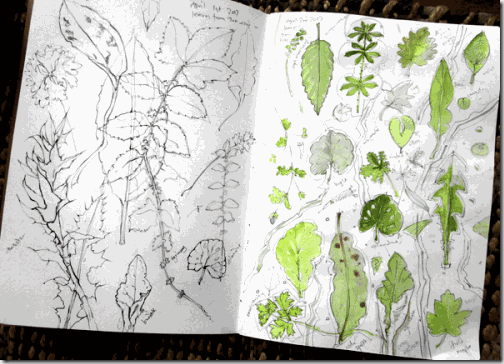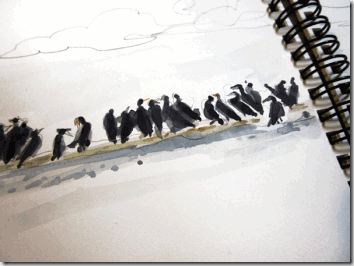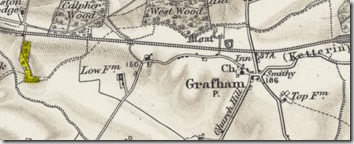One of my projects this year is to make some work about the small spinney which I cycle through most days. I have already made some drawings and prints but it’s a wonderful place with so much to offer that I have decided to make more. A few days ago when it was sunny I took a small notebook with me and stopped to makes some scribbly notes.

It was very cold and the drawings are quick shaky lines but really useful to me. To stop and draw, however quickly makes you sort out what exactly it is that you are really interested in. Ignoring the muddle you simplify and isolate (I think intuitively) the things that are important to you in that moment. Another day the drawing would be very different and the added bonus of drawing outside is just the joy of being outside and those chance encounters with the natural world. It makes you stop for a while and in this quiet place, off the main track, there is little to distract other than the noise of the wind in the tree tops, squirrels, woodpeckers and a friendly robin.
Today I returned for more drawing and again the robin appeared and hopped around by bike.


Yes it is very muddy! Why Savages Spinney?
The Spinney is a narrow strip of fascinating woodland which contains some fragments of the ancient wood. It features on the old maps. On this scale it is tacked onto the end of Calpher (Calfe)wood. This one from 1643.

This from 1687

Here nearby Brampton wood is encircled. It was an important hunting wood, once part of the much larger Royal forest of Warbridge.
In 1889 the spinney is more clearly defined. I have highlighted it. There is the addition of the railway line, now long gone and Low Farm, lost under the reservoir in the 1960s.

Then 1986 and the reservoir has engulfed Low Farm, the railway line closed and fractured and the spinney now has its feet in the water. This is how it is today.

So it is an area which has seen development and loss. Settlement here dates back to the Iron Age. Roman remains have been found near Perry and the church here dates back to the early 12th Century. So there is much to think about.
The wood itself is very lightly managed by the Wildlife Trust. Piles of logs are left to rot and are overcome with moss and fallen and broken branches remain undisturbed. There are woodpeckers, owls, fungi, carpets of bluebells in the spring, orchids many many bees and insects and down the side track is the bird hide, looking out over Savages Creek. There overwintering waterbirds take shelter along with resident swans, coot, moorhens, herons, cormorants and egrets and delightful grebes.
Yes indeed, so very much to think about!!






























